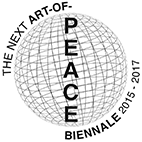‘Video Breakfasting Together, If You Wish’ (after Robert Filliou)
Performance-presentation, ‘Video Breakfasting Together, If You Wish (after Robert Filliou)’ at ‘Learning From The CRUMB Method Over A Cup Of Tea: Reflections On Creating And Exhibiting Digital Arts’ panel, ISEA2013: 19th International Symposium on Electronic Art, Sydney.
As part of a conference panel alongside fellow CRUMB researchers at ISEA 2013 (Learning From The CRUMB Method Over A Cup Of Tea: Reflections On Creating And Exhibiting Digital Arts), I outlined my research in identifying and developing curatorial models of practice after globalisation that articulate the principles of The Eternal Network, created by artists Robert Filliou and George Brecht in 1968, in which the network itself is the artwork. More than solely a means of distribution or medium of production, The Eternal Network became a conceptual context for ‘permanent creation’ [1]. My research explores the attractiveness of networks as decentralized or distributed environments bypassing institutional curatorial spaces. There is often a political as well as aesthetic dimension to the attractiveness of networks-as-artworks. This may now be undermined by a dependence of these networks upon the Internet, argued to be ‘the most material and visible sign of globalisation’ [2]. Lovink [3] observes that the ‘pace [of globalisation] has increased with the advent of new technologies, especially in the area of telecommunications’ and so artists, activists and commercial, corporate players alike have employed online networks in search of their respective ‘utopias’. Lovink elaborates that ‘we need to develop a long-term view on how networked technologies should and should not be embedded in political and cultural practices’ [4].
How far has the ‘globalism’ of communication sought by Filliou and others been supplanted by ‘globalisation’ in its neoliberal, doctrinal sense? [5]. How can we rethink curatorial strategies in respect of the network-as-artwork’s media of production, means of distribution and experience of reception? In short, how can we find ways to curate The Eternal Network after globalisation?
As a practising artist with a long history of performance work, one who considers new media curating as a creative and critical cross-artform activity, I have been conducting experiments which re-model Filliou’s distance artworks that, while networked, (insofar as they involved remote participation) did not always require verification of transmission (Telepathic Music, 1977-9) or even real-time engagement. Filliou seemed fond of creating allegories of telepresence in video works such as Video Dinner, Video Breakfasting Together, If You Wish and Video Breakfasting with Roy Kiyooka (1979). These were very lo-fi works in which Filliou, in a pre-recorded video via a TV monitor, discusses his various interests with a spectator who plays along with the pretence that the that the discussion is ‘live’. While contemporaries of Filliou such as Roy Ascott were fully engaged in exploring new technologies to broaden possibilities for ‘telematic exchange’, Filliou seemed to lack capacity or desire to deal with technologies to the same extent.
Robert Filliou. Video Breakfasting with Roy Kiyooka, 1979. Video Still. Courtesy Western Front.
For ISEA 2013, I gave a performance-presentation via Skype which remodelled those video works of Filliou’s mentioned above, and borrowed text from another (Travelling Light – It’s a Dance Really, 1979). It was 05:00 AM where I was and 2:00 PM the same day at ISEA in Sydney. I asked the audience how old they were, whether they were happy, what they felt about love and shared plans to host The All Day Video Breakfast as a global telematic event on 17 January 2014, the date Filliou proposed as ‘Art’s Birthday’. I also took a group photograph – by using a camera to photograph the Skype window on screen – and a self-portrait which I tweeted following the discussion.
Notes:
1. Robert Filliou, From Political to Poetical Economy, (Vancouver, BC: Morris and Helen Belkin Gallery, 1996).
2. Lev Manovich, The Language of New Media,(Cambridge, MA: MIT Press, 2001).
3. Geert Lovink, A Ramble through Theories of Globalization, (2002),<http://geertlovink.org/texts/a-ramble-through-theories-of-globalization/>, accessed: 5 July 2013.
4. Geert Lovink, Networks Without a Cause: A Critique of Social Media (Cambridge, UK: Polity, 2012).
5. Noam Chomsky, Profit Over People: Neoliberalism and Global Order (New York: Seven Stories Press, 1999).




